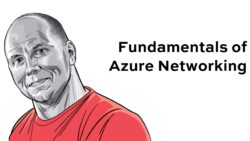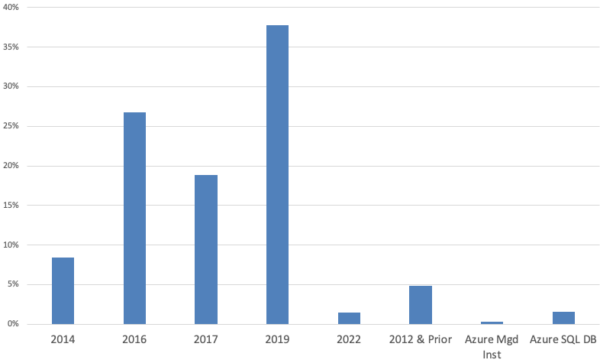I step away from the backyard long enough to take y’all’s questions from https://pollgab.com/room/brento.
Here’s what we covered in this episode:
- 00:00 Start
- 02:23 Stockburn: Hi Brent, we are using distributed always on AGs, with a node in AWS for DR. We are thinking of using this to quickly migrate the work load to the cloud by failing over to the DR node, building a second server in AWS. Have you done this, recommend it or run away screaming?
- 04:38 Developer who cosplays as a DBA: Is parameter sniffing inevitable in a database that scales large enough? Or are there SQL Server rockstars out there who can write all their queries to be immune to parameter sniffing?
- 06:35 dirty-dba: I am tuning a SUM query. Removing all non pk indexes from the table makes the query run faster than it does with just the specific indexes required for the query, I am subscribed to your training package, but can’t get my head around why is slower with indexes
- 07:46 Vishnu: How frequently should we be updating 1. First responder kit, 2. sp_WhoisActive, 3. Ola Hallengren’s SQL Server Maintenance Solution?
- 09:17 Boutaga: Hi Brent, as a production dba I use SSMS templates scripts folder as a repository for my scripts, this is synced through onedrive. What tool would you recommend as a script repository which would sit between that and a local gitlab ? Is there any ?
- 10:24 Bleona: What should someone do if they witness scripts / source the IT manager brought from their previous company?
- 11:41 Enca : Can a SQL query be expensive without being slow or is slow + expensive mutually inclusive?
- 12:28 Dilip Kumar: Are there any gotcha’s with using SELECT TOP 0 C1, C2 to initialize temp staging tables?
- 13:15 Fernando Soler: Several of our SQL Data files have file stats showing 99% reads vs 1% writes. Are there any optimizations to be on the lookout for in this scenario?
- 14:11 Haluk Bilginer: What is the top Kerberos issue you run into with your clients running SQL Server? How do you like to troubleshoot?
- 15:24 Janis: We are on SQL Server 2016 and plan to migrate to 2019, as for now I have a couple queries where memory grants are going out of roof (1,5 gb for one query). Where I can find more info or deep dive in memory grants as all YouTube videos and google doesn’t help? I know 2022 adaptive
- 16:29 Kareena Kapoor: What are the recommended online training courses for running SQL Server in an Azure VM? What are the recommended online training courses for running SQL Server in an AWS VM?
- 17:05 Can Yaman: What is your opinion of using Azure Backup to back up Azure SQL VM?
- 18:53 Sean: Hi Brent! Did you have a chance to visit the volcano when you were in Iceland? I’m debating booking tickets to see the latest and greatest.
- 20:38 Pythor: Where is a good place to learn about source control for SQL Server stored procedures and schema changes?
- 21:22 Rajesh Khanna: What are the top issues you see for shops that choose to use SQL tables as queues?
- 22:16 Satnam Singh: Brent, Can you please help if there is any T-SQL to find DTU Utilization for each session on a Azure PaaS Database.
- 23:01 GiddyUp (409): Is there any forensic evidence you like to capture prior to killing a long running SQL agent job?
- 24:15 Dafina: Can a given table simultaneously support both fast OLTP and OLAP queries or is this not recommended?
- 25:30 DadJokerDetroit: If an SQL Developer recursively bangs his/her head, will they end up with a CTE injury?
- 25:55 Dumitru: Can I enable Accelerated Database Recovery, Always On Basic Availability Group and Log Shipping on primary replica of SQL 2019 Standard Edition?
- 26:25 KG: What’s the best way to migrate/upgrade an existing availability group to a new server and new sql server version? I’m primarily looking at log shipping versus leveraging the existing availability group.
- 27:12 Eduardo: How are the advertisers for your twitch stream chosen? How are the advertisers for your youtube stream chosen?
- 27:56 Sql100: In one of your q&a sessions, you had mentioned that creating index as well on the foreign column would also have efficiency of retrieving the data – with the include having multiple columns or just that particular foreign key index? Thank you in advance, as always.
- 28:39 Mike: Can’t download SqlServer Azure data to Excel with MFA login, only SqlServer Authentication. Is there a way using MFA login to download Azure data into Excel?

 If your company is hiring, leave a comment. The rules:
If your company is hiring, leave a comment. The rules:




 Sometimes, I don’t care if questions get a lot of upvotes at
Sometimes, I don’t care if questions get a lot of upvotes at 